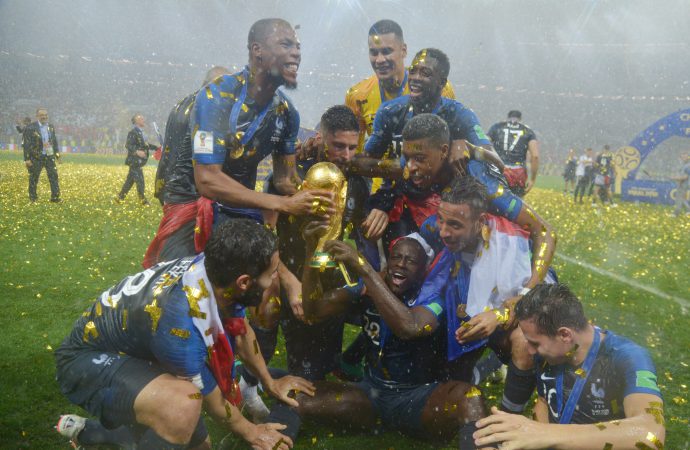Historical data and future projections illustrate a significant climate challenge for upcoming mega-events, says Walker J. Ross
With the Beijing 2022 Winter Olympic Games ongoing, there has been mounting concern over the lack of natural snow in the host communities. In fact, several reports have been published covering the dependency on the use of artificial snow and negative environmental impacts of the use of artificial snowmaking equipment.
While this edition of the Winter Games is far from alone in its use of artificial snow, the heightened concern comes from a more urgent call to action on climate change.
According to recent Intergovernmental Panel on Climate Change (IPCC) reports, we must limit our average global temperature rise to 1.5°c above pre-industrial levels to avoid catastrophic impacts to human health, biodiversity, and our economies.
That’s a 1.5°c rise above temperatures in the early period from 1850-1900! We are dangerously close to this level already with the average global temperature rise being in the range of 1.2 to 1.3°c above pre-industrial levels.
The consequences of inaction on climate change will be severe. There is the potential loss of entire nations like Maldives and Marshall Islands. And, on the sport side, there is the potential threat to the sport industry in the form of lost winter sport seasons and shifts in climate that could make all outdoor sport dangerous or difficult to hold. These consequences are what future sport industry professionals and mega-event organisers ought to take note of since climate change will fundamentally alter our relationship with sport and therefore the business of sport.
My colleague Madeleine Orr of Loughborough University London and I took note of this and wondered how climate change would impact the Olympic Games and FIFA Men’s World Cups of the next decade (2022 – 2032). Additionally, we asked ourselves what are the benchmark environmental conditions that these events need in order to be held? With these questions in mind, as academics, we set out to answer both.
For the benchmark environmental conditions, we considered past research and examined three types of environmental factors: air quality, precipitation, and temperatures.
For air quality, our research concluded that an Air Quality Index above 151 is unhealthy for athletes, spectators, and other attendees at these events. Precipitation matters for sports dependent upon dry conditions or snowfall, but heavy rains may interrupt competition. Likewise, all events need to avoid lightning and thunder. The IPCC considered heavy rain as above 7.6 mm of rain per hour, which we determined would be enough to interrupt most sport events.
Temperature needs vary depending upon if a sport is a winter or non-winter sport. Winter sports need temperatures below 0°c for natural snow and below -2.2°c for artificial snowmaking. Non-winter sports want to avoid temperatures above 25.5°c to avoid moderate heat-related risks to athlete, spectator, and other attendees’ health.
Temperatures above 27.7°c pose even higher levels of risk. With global average temperatures rising, this highlights a problem for both winter and non-winter sports alike.
To make predictions about the mega-sport events, we gathered historical weather data for the communities of known Olympic Games and FIFA Men’s World Cup hosts between 2022 and 2032. This data included air quality, precipitation, and temperature data for the time of year in which the events would be held. We compared this data with our benchmark environmental conditions and to the recent IPCC report to make projections about potential impacts of climate change on these events.
The 2022 Olympic Winter Games in Beijing are in much of the global focus already. Poor air quality in February combined with arid climates and a lack of insufficient temperatures across all three sites means that these Winter Games are dependent upon artificial snow and will need to improve air quality.
The 2022 FIFA Men’s World Cup in Qatar has also been the subject of much scrutiny. Our findings suggest that extreme heat is a threat to this event throughout the time it will be hosted. This is already a known factor that has caused the event to be switched from the traditional northern hemisphere’s summer months to its winter months. Additionally, Qatar is taking a variety of sport and technological measures to improve heat safety at the event.
Across the remaining events (Paris 2024 Summer Olympics, Milan-Cortina 2026 Winter Olympics, Canada-United States-Mexico 2026 FIFA Men’s World Cup, Los Angeles 2028 Summer Olympics, and Brisbane 2032 Summer Olympics), we see a common theme of too hot of temperatures and poor air quality for all events with the exception of Brisbane in 2032. There are no projections for danger in air quality, precipitation, or heat for this event, but given the decade of time it is highly possible that the conditions may change.
The Paris and Los Angeles Olympics will potentially experience extreme heat that may be a detriment to athletes, spectators, and other event attendees while the Milan-Cortina Winter Olympics may experience temperatures above artificial and natural snowmaking thresholds. Extreme heat is also a concern for the 2026 World Cup across nearly all potential host communities. However, it is difficult to make broad projections for this World Cup given the geographic size of the host communities.
The question now should be this: what do we do with this information?
The answer is plan, adapt, and do our part to combat climate change. These projections are just that: projections. It is possible that the situation may change for the better or worse with time. We project a general trend in increased temperatures, poorer air quality, and more extreme weather events (e.g., heat waves, heavy rains, and tropical cyclones). Management for these events ought to consider that climate change will make these events more difficult to host to create contingency plans.
Moreover, since many event organisers claim to want to create long-term legacies from these events (the efficacy of these legacies is questionable but a discussion for another day), the long-term impacts of climate change need to be considered in future uses of infrastructure, programs, and community engagement. For example, sea-level rise might not impact a waterfront stadium in 10 years, but it may impact that venue in 30 to 50 years.
It is my hope that these events will take place and successfully create the positive outcomes desired for all stakeholders. However, I would caution that climate change and the environment must be part of the planning in both the near-term and long-term. To date, environment has received lip service from many sport organisations, but it will require a more serious effort in the future. These events, as influential manifestations of sport ought to be the leaders we need in tackling this ubiquitous problem.
Walker J. Ross is an assistant professor of sport business management at Florida Southern College and a member of the Sport Ecology Group










Leave a Comment
Your email address will not be published. Required fields are marked with *